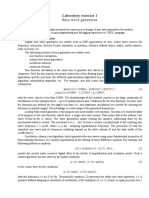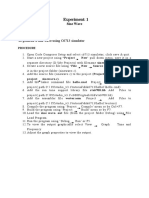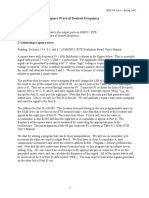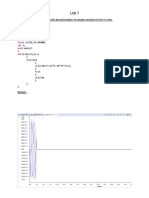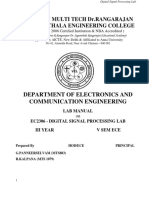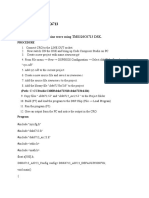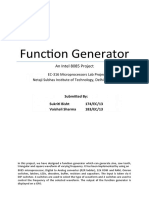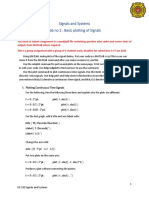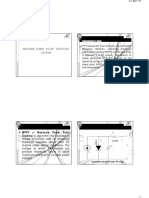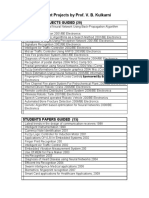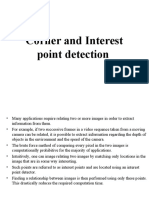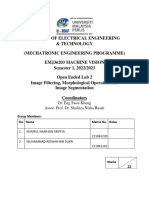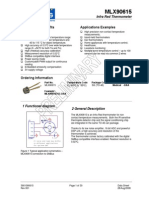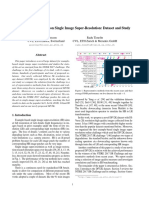0% found this document useful (0 votes)
92 views6 pagesLab3 PDF
This document provides instructions for a lab exercise on generating a sine wave using digital signal processing on a TMS320C6000 chip. The objectives are to learn how to create and build a C project, use functions in C, and generate a sine wave using table lookup. Students are instructed to create a project file, add source code, set compiler and linker options, load and run the program, and rewrite a function to generate a sine wave of a user-defined frequency by reading from a pre-populated sine wave table.
Uploaded by
SELVAKUMAR RBCopyright
© © All Rights Reserved
We take content rights seriously. If you suspect this is your content, claim it here.
Available Formats
Download as PDF, TXT or read online on Scribd
0% found this document useful (0 votes)
92 views6 pagesLab3 PDF
This document provides instructions for a lab exercise on generating a sine wave using digital signal processing on a TMS320C6000 chip. The objectives are to learn how to create and build a C project, use functions in C, and generate a sine wave using table lookup. Students are instructed to create a project file, add source code, set compiler and linker options, load and run the program, and rewrite a function to generate a sine wave of a user-defined frequency by reading from a pre-populated sine wave table.
Uploaded by
SELVAKUMAR RBCopyright
© © All Rights Reserved
We take content rights seriously. If you suspect this is your content, claim it here.
Available Formats
Download as PDF, TXT or read online on Scribd
/ 6
